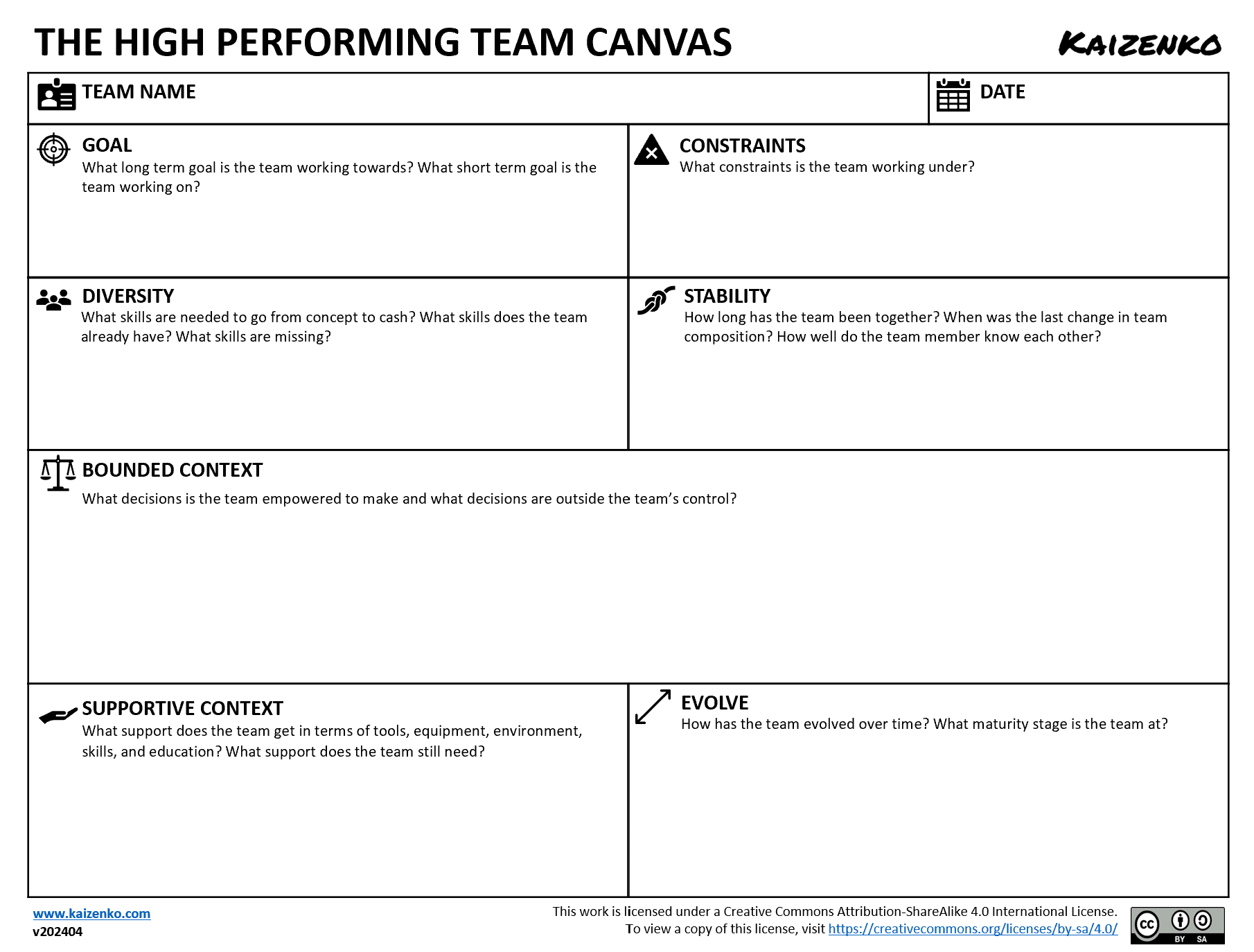Use the High Performing Team Canvas as a template to help you take your teams to higher performance levels.
- Goals: Establish long term goals and short term goals to ensure teams have a shared sense of purpose and are aligned towards a common objective. A high performing team works collaboratively together towards a common goal or vision and understands organizational priorities. Without a common goal or vision, there is little collaboration. It’s just members working in silos and coordinating their activities and various initiatives via status reporting.
- Constraints: Establish clear constraints and make sure the constraints that the team is working under are clearly visible and well understood by all team members to help the team focus on what’s important and avoid getting distracted by things out of scope or outside the team’s control. A high performing team works with a sense of urgency and focus on achieving their goals.
- Diversity: Create a team with a diverse set of skills to ensure the team is capable of delivering value to the customer. Instill a notion of mutual accountability for the deliverable to further improve team collaboration and communication. A high performing team has all of the skills needed to take an idea or concept and transform it into a working product.
- Stability: Maintain team stability, dedication, and longevity to ensure team members bond and grow together as a team. Members of a high performing team trust and respect each other’s strengths and differences. They communicate openly, and resolve conflict effectively as they transition from a team that merely coordinates or cooperates to a team that collaborates and is high performing.
- Bounded Authority: Clarify the team’s decision making authority to ensure the team understands which decisions they are empowered to make on their own, and which decisions are not theirs to make and require consultation. Over time, expand the team authority to increase team autonomy. A high performing team clearly understands team roles, responsibilities, and accountability.
- Supportive Context: Ensure the team has information support in terms of access to people that can provide clarification; infrastructure support in terms of physical space, setup, technology, and tools; education support in terms of training, resources, and upskilling; environment support in terms of psychological safety, experimentations, and knowledge sharing; reward support in terms of proper compensation and recognition. A high performing team has effective leaders that trust and support the team to deliver on their goals.
- Evolve: Ensure the team has the space and time to take ownership of how they work and then continuously improve. A high performing team is on a continuous journey to learn, grow, and improve.
